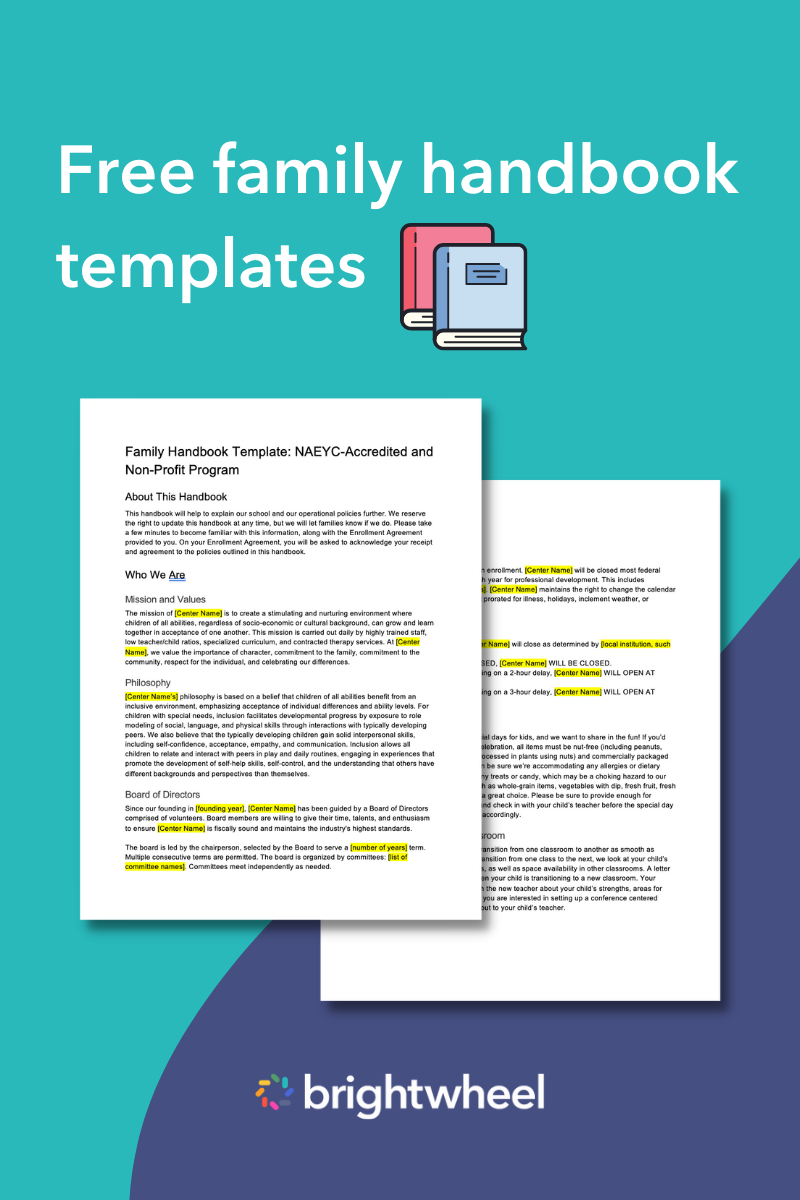
The discussion surrounding universal pre-K has gotten louder over the last decade. With six states currently providing this educational opportunity to young children, more states are looking to expand their policies to include preschoolers.
In this article, we’ll discuss universal pre-K—what it is, its benefits and drawbacks, and examples of its implementation across the country.
The concept of universal pre-K
Universal pre-K, also called preschool for all, is a policy framework that would provide all preschool-aged children with access to high-quality, government-funded education and care. These childcare programs would be accessible to any child, regardless of their family’s financial situation or the child’s abilities.
The concept of universal pre-K has been around for nearly two centuries. The state of Wisconsin promised free, voluntary education for four-year-olds as early as 1848 in its constitution. With the foundation in place, it wasn’t until the 1990s that the idea started to gain momentum.
The concept and its application could be seen taking form with a Boston preschool lottery. Mayor Thomas Menino wanted to improve Boston’s public schools by providing universal, full-day kindergarten. To bypass their tight budget, the city moved resources from preschool to kindergarten. This change left a limited number of spots for city-funded preschool. Menino and the city decided to enact a lottery system to fairly and randomly select which children would get into the program. Menino likely didn’t realize that he was laying the groundwork for universal pre-K.
Two decades later, three researchers—Guthrie Gray-Lobe, Parag Pathak, and Christopher Walters—studied and published the findings of this “universal pre-K experiment” in MIT’s 2021 discussion paper “The Long-Term Effects of Universal Preschool in Boston.” They compared the outcome of the children, now adults, who were selected in the lottery to those who weren’t. Their goal was to study the effects of large-scale public preschool on college-going, college preparation, standardized test scores, and behavioral outcomes.
The study determined that the children who won the lottery didn’t perform noticeably better on standardized tests in elementary, middle, or high school. However, there were notable differences in college-going, college preparation, and behavioral outcomes. Nearly 70 percent of the preschool lottery winners graduated from high school, compared to 64 percent of those who weren’t selected for the program. The children in the lottery were also more likely to take the SAT and enroll in college. It was even determined that the children who attended the public preschool program were less likely to be suspended in high school and less likely to be sentenced to juvenile incarceration.
This accidental experiment illustrates the possibilities for large-scale universal pre-k and lays the groundwork as the current government administration pushes to make preschool available to all children on a national scale.
Universal preschool pros and cons
Early childhood education has many lasting benefits. It helps children learn and build skills related to the four major areas of development—physical, cognitive, language, and social-emotional.
Physically, preschool helps children develop the fine and gross motor skills that they use for holding a crayon or running. Their cognitive development presents as an increase in their thinking and reasoning, where they learn to count and recognize colors and shapes. A young child’s ability to name letters and numbers is a marker of their language development, while the social-emotional skills they learn help them share, make friends, and follow directions. These skills lay the foundation for their continued success as children and, ultimately, as adults.
It would likely be challenging to specify any cons of children receiving quality education; however, it’s necessary to note some of the drawbacks and benefits of building a universal pre-K system.
Drawbacks
Overworked educators
Universal pre-K programs will likely have to abide by higher standards, set by the state, to receive funding. While providing high-quality education is positive, lack of funding, often seen in educational institutions, leads to educators with little support in the classroom. This increase in duty can cause educators to become overworked and burn out.
Impact on private childcare programs
The implementation of universal pre-K could negatively impact private childcare programs. They can potentially lose older children to publicly funded preschools, which correlates to a revenue loss. This lack of financial sustainability could also lead providers to reduce costs which will likely harm the program's quality. Without the revenue from older children in a program, private childcare programs might also face the difficult decision of closing down their business.
Benefits
Preschool for all
In 2019, before the COVID-19 pandemic, the national preschool average for three to five-year-olds enrolled in preschool programs was 61%. More than half the country was operating at levels equal to or less than this average. The greatest benefit of universal pre-K is that it gives more children access to quality education regardless of a child’s developmental abilities or their family’s ability to pay.
Diverse classrooms
Making preschool more accessible creates more diverse classrooms. The national average annual cost of child care in 2020 was $10,174, a 5% increase from the previous year. These costs diminish the number of families that can afford childcare-related expenses. Universal pre-K promotes diversity, equity, and inclusion in education by making preschool programs available to families of different ethnicities, cultures, religions, and socioeconomic backgrounds.
The impact of universal pre-K goes beyond the classroom. While it can lead to an increase of people in the labor force, the question of funding and its implication of higher taxes fuels the universal pre-K opposition.
Universal pre-K examples
As of January 2023, six states and many cities have universal pre-K programs. This number is expected to increase as many states are currently working through legislation to push the initiative forward. Here are examples of new and established universal pre-K programs across the country.
Universal pre-K in California
The California Department of Education has revised the California Preschool Learning Foundations to “address any potential for inequities, address bias, and promote equitable opportunity for all children.” As part of their universal pre-K expansion, the state is introducing transitional kindergarten (TK) as a universally accessible and free program for four-year-old children by the 2025-2026 school year. The California TK program created and uses age and developmentally-appropriate modified kindergarten curriculum.
In 2021, California legislation was passed that requires any local education agency operating as a kindergarten to provide a TK program to all four-year-olds by the 2025-2026 school year.
Universal pre-K in New York
On July 1, 2021, New York state began investing $970 million into their state-administered pre-K programs for four-year-old children. The following year, the budget expanded with an extra $105 million, $90 million of which was funded and allocated to 232 districts across the state. This additional funding was to support nearly 15,000 full-day seats in the classroom.
While the system is in place, New York City’s Department of Education Chancellor, David Banks, discussed a broken universal pre-k system in a press conference in November 2022. He noted 40,000 empty seats across 3-K and pre-K classrooms, while other providers have waiting lists for children to get in. Banks also admitted that there had been delays in providers getting paid, some taking out loans or using their savings to keep their programs operating.
From interviews conducted with more than two dozen current and former employees of the Education Department’s Division of Early Childhood Education, The New York Times reported that the city could lose more than $70 million in Head Start funding and suffer a decline in standards. The city is currently undergoing policy changes to the program under Mayor Eric Adams.
Universal pre-K in Florida
In November 2002, Florida residents voted to pass an amendment on providing universal pre-K to four-year-olds. Their policy, Voluntary Prekindergarten (VPK), was signed into law in January 2005 and implemented the following August.
VPK gives Florida parents the option of three programs:
- School-year program: Provides 540 instructional hours, with class sizes of 20 or fewer children.
- Summer program: Provides 300 instructional hours, with class sizes of 12 or fewer students.
- Specialized instructional services program: Provides children with special needs and/or disabilities with an established Individualized Education Plan (IEP).
While the system has been operating for nearly two decades, an obvious problem for families is that VPK is a half-day program. Some families opt out of enrolling their children because they can’t accommodate the half-day schedule.
Universal pre-k in Vermont
In 1987, Vermont created the Vermont Early Education Initiative, an annual competitive grant program to finance early education opportunities for at-risk three to five-year-olds. Twenty years later, legislation expanded publicly-funded pre-K education for four-year-old children in public schools and private programs, with funding coming from the state’s Education Fund. In 2014, Act 166 was passed, requiring all public school districts to offer universal pre-K for three to five-year-old children. It was fully implemented in 2016 and funds 10 hours of weekly instruction—in public schools or community-based programs—for 35 weeks in a school year.
Similar to the half-day issue in Florida, families in Vermont have to work around this schedule; however, most make it work. The National Institute for Early Education Research (NIEER) reports that 76% of Vermont four-year-olds were enrolled in a universal pre-K program before the pandemic.
Universal pre-k in Wisconsin
The state of Wisconsin might not say that they have a universal pre-K program; however, when you consider that 99% of their school districts offer the program, you might say differently. It has been promised in their constitution—since becoming a state in 1848—to provide free, voluntary education to four-year-olds. While Wisconsin doesn’t require their school districts to offer their Four-Year-Old Kindergarten program (4K), 405 out of 411 school districts do.
The program funds 437 instructional hours per year. Most programs operate at a half-day schedule for four to five days during the week. Other programs may operate for a full day for two to three days per week.
While states like Florida don’t require universal pre-K teachers to have bachelor’s degrees, Wisconsin does. This may pose a problem for some educators who have built their careers through experience and without a formal degree.
Universal pre-k in Oklahoma
In 1998, Oklahoma became the second state to provide universal pre-K for all four-year-olds. Twenty five years later, at least 70% of four-year-olds were enrolled in the publicly-funded program. While the system is working, Joe Dorman, CEO of the Oklahoma Institute for Child Advocacy, expresses some challenges with universal pre-K in Oklahoma. He mentions that it’s a struggle to reach rural children. This comes from many factors, including preschool staff shortages, a lack of seats, and families’ underestimated value of preschool.
Preschool for all
Universal pre-K is a policy framework that would make access to high-quality early childhood education possible for all four-year-olds and their families. These programs would be available regardless of a child’s developmental abilities and a family’s ability to pay. While there are benefits and drawbacks to implementing this system nationwide, there’s no denying the positive impact it’s had on the number of children who can attend these programs in half a dozen states.

